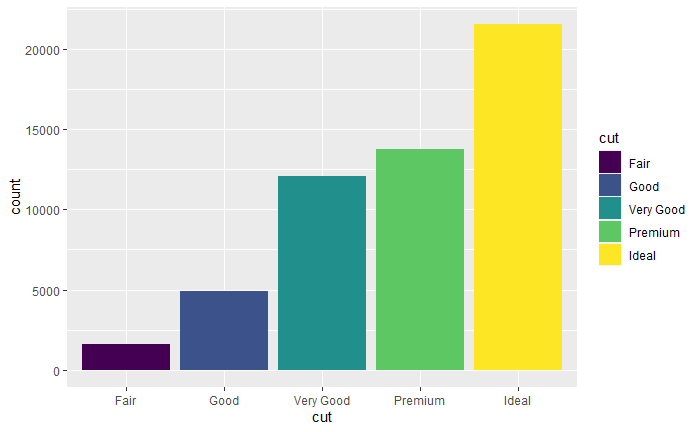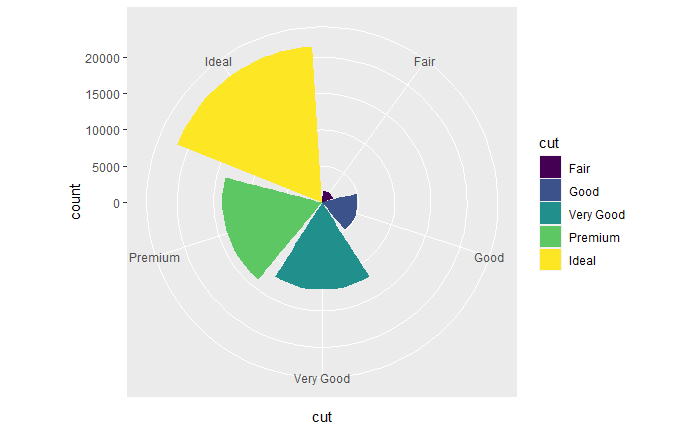Convert Graph to Polar Co-ordinates
Introduction
The default coordinate system is the Cartesian coordinate system where the x and y position act independently to find the location of each point. We can change the co-ordinate system to polar co-ordinate, which will help to comprehend the data effectively.
Procedure
We will be working with the diamonds data set present in-built in ggplot2. Few of the rows of the dataset are as follows:

We have already looked at creating a basic bar chart here. We will convert the bar chart into polar co-ordinate system which will give us Coxcomb chart.
Code
library(ggplot2)
# bar chart
ggplot(data = ggplot2::diamonds) + geom_bar(mapping = aes(x = cut, fill=cut))The output of code is:

library(ggplot2)
# coxcomb chart by converting to polar coordinates
ggplot(data = ggplot2::diamonds) + geom_bar(mapping = aes(x = cut, fill=cut)) + coord_polar()The output of code is:

Conclusion
Thus we have successfully converted the Cartesian co-ordinate system to polar co-ordinate system.
References
- https://r4ds.had.co.nz/